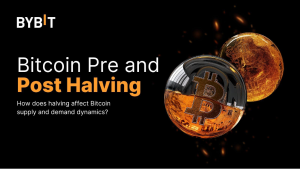Major US stock exchanges fail to dismiss market manipulation allegations in HFT case
New York Court denies the motion to dismiss by BATS Global Markets, Chicago Stock Exchange Direct Edge ECN, New York Stock Exchange, NYSE Arca, Nasdaq OMX BX, and the Nasdaq Stock Market LLC.

Several major US stock exchanges have failed to nix allegations against them in a high-frequency trading case. On Tuesday, May 28, 2019, Judge Jesse M. Furman of the New York Southern District Court denied the Exchanges’ motion to dismiss.
In four actions originally filed in New York, various investors (the plaintiffs) brought claims under Sections 6(b) and 10(b) of the Securities Exchange Act of 1934 against seven stock exchanges – BATS Global Markets, Inc., Chicago Stock Exchange, Inc., Direct Edge ECN, LLC, New York Stock Exchange, LLC, NYSE Arca, Inc., Nasdaq OMX BX, Inc., and the Nasdaq Stock Market LLC (collectively, the “Exchanges”) – and two Barclays entities, Barclays PLC and Barclays Capital, Inc.
Section 10(b) of the Exchange Act makes it unlawful “for any person, directly or indirectly, . . . to use or employ, in connection with the purchase or sale of any security . . . any manipulative or deceptive device or contrivance in contravention of such rules and regulations as the [Securities and Exchange] Commission may prescribe as necessary or appropriate in the public interest or for the protection of investors.”
The investors allege that the Exchanges are violating the federal securities laws by providing services to high-frequency trading (HFT) firms in a way that amounts to actionable “market manipulation.” In particular, the investors argue that by providing (or selling) HFT firms services that allow those firms to execute allegedly harmful trading strategies more successfully, the Exchanges have engaged in conduct that adds up to an unlawful manipulative scheme under Securities and Exchange Commission Rule 10b-5 and are therefore liable under Section 10(b) of the Securities Exchange Act of 1934.
Of particular relevance to the claims that remain are three services that the Exchanges sell to HFT firms: proprietary data feeds, “co-location” services, and “complex order types.” The crux of the plaintiffs’ Section 10(b) claim is that the Exchanges developed these products and services, sold them to HFT firms and failed to fully disclose these facts to the plaintiffs. The plaintiffs allege that, as a result, they were induced to trade based on artificial price signals, only to see their trades execute at worse prices than advertised, and that the Exchanges’ role in that overall scheme makes them liable to the plaintiffs under Section 10(b) and Rule 10b-5.
In 2015, this Court dismissed Plaintiffs’ claims in their entirety. The plaintiffs then appealed the dismissal of their Section 10(b) claims against the Exchanges. The Court of Appeals vacated the Court’s judgment dismissing Plaintiffs’ claims against the Exchanges, holding that the Exchanges were not absolutely immune from liability for the conduct alleged.
In denying the Exchanges’ Motion to Dismiss on Tuesday, the Court turned to the Exchanges’ arguments with respect to the merits of the plaintiffs’ claims. In doing so, the Court referred to the decision by the Second Circuit, which held that the plaintiffs have “sufficiently pled that the Exchanges created a fraudulent scheme that benefited HFT firms and the Exchanges, sold the products and services at rates that only the HFT firms could afford, and failed to fully disclose to the investing public how those products and services could be used on their trading platforms.”
That holding, Judge Jesse M. Furman said. is obviously binding on the District Court and, thus, conclusively resolves whether the plaintiffs adequately allege the first element of a Section 10(b) market-manipulation claim: that the Exchanges engaged in “manipulative acts.”
The Court concluded that the plaintiffs plausibly allege that the Exchanges’ alleged misconduct was a proximate cause of the economic loss they suffered by trading in the manipulated securities markets hosted on the Exchanges’ platforms. The Court found that the zone of foreseeable risk created by the Exchanges’ allegedly manipulative scheme included the risk that investors trading on the Exchanges’ platforms would be victimized by the very products and services that the scheme allegedly concealed.
The case continues at the New York Southern District Court.









